Uncategorized
Hepatitis in Punjab: Rising Cases and Treatment Efforts
Understanding Hepatitis
Hepatitis is a medical term that describes the inflammation of the liver, a critical organ responsible for numerous essential functions such as detoxification, protein production, and assisting in digestion.
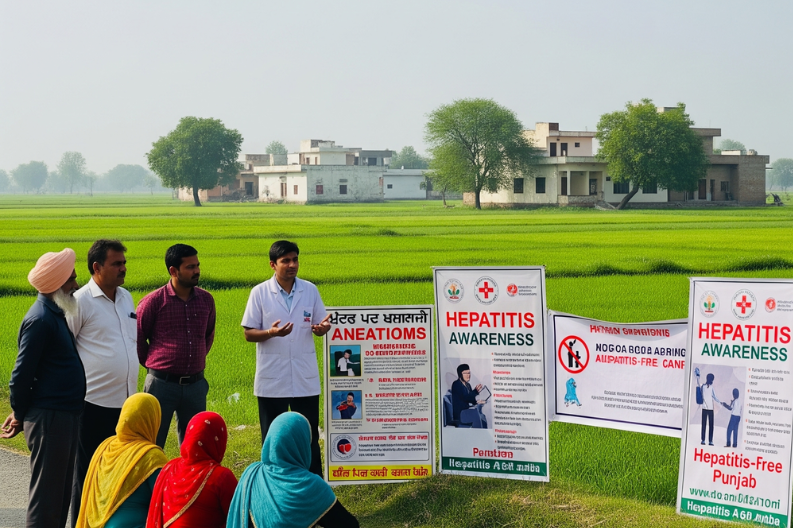
Hepatitis in Punjab has emerged as a serious public health challenge, with rising cases linked to intravenous drug use and poor preventive practices. Hepatitis, an inflammation of the liver, disrupts vital functions such as detoxification and protein production, often leading to severe complications. Viral forms like hepatitis A, B, C, and E account for most infections globally, and July 28, observed as World Hepatitis Day, underscores the urgency of tackling this preventable disease.
Hepatitis A and E usually spread through contaminated food or water, often causing jaundice, while severe cases can progress to acute liver failure. In contrast, hepatitis B and C spread through infected blood or bodily fluids, with chronic infections leading to cirrhosis, end-stage liver disease, or liver cancer.
Punjab has become a high-burden state for hepatitis C, largely due to widespread intravenous drug abuse. Experts at PGIMER note that the outpatient liver clinic alone sees nearly 1,000 chronic viral hepatitis patients every year. To counter this crisis, Punjab introduced the decentralized ECHO hub-and-spoke model, which has gained national and international recognition for improving access to diagnosis and treatment.
Alarming trends also show a surge in hepatitis A cases, with nearly half of the acute liver failure admissions at PGIMER linked to this virus. Doctors warn of its atypical presentation, including prolonged jaundice and severe itching, sometimes requiring advanced treatments like plasma exchange.
Vaccination remains one of the strongest preventive measures. Experts stress the importance of hepatitis B vaccination within 24 hours of birth to curb mother-to-child transmission. Alongside, maintaining hygiene, consuming safe food and water, avoiding intravenous drug use, ensuring sterilized equipment for tattoos and piercings, and practicing safe sex are essential steps to reduce infection risks.
Regular testing is equally critical since chronic hepatitis often shows no early symptoms. Individuals with prior transfusions, drug use, or family history of liver disease, as well as pregnant women, are urged to prioritize early screening.
Government support through the National Viral Hepatitis Control Program provides free diagnosis and treatment at facilities like PGIMER and district hospitals across Punjab, with cure rates proving highly encouraging.
As World Hepatitis Day draws near, experts emphasize that awareness, prevention, and timely treatment are vital to reducing the burden of Hepatitis in Punjab. Collective action from authorities, healthcare professionals, and communities can pave the way toward a healthier and safer future.
Uncategorized
A New Hope for Spine Patients: Dr. Aditya’s Groundbreaking Surgery in Tricity
Jammu, November 16: A big step for spine care has taken place in Tricity.
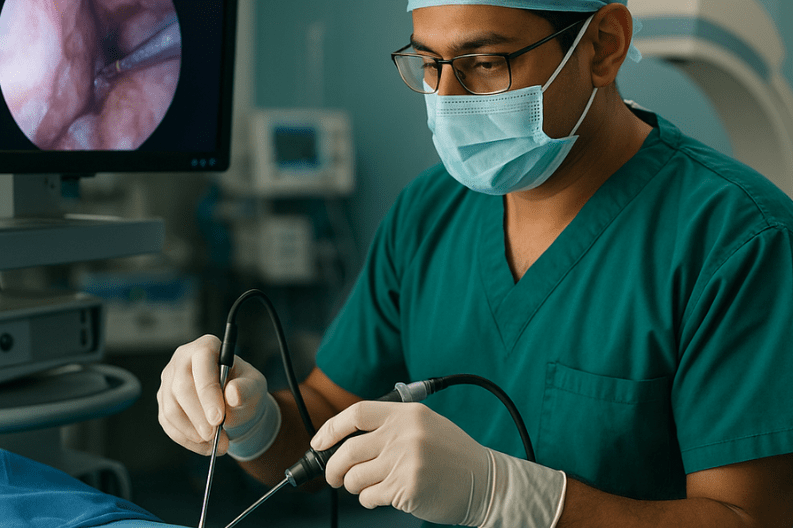
Dr. Aditya’s Groundbreaking Surgery in Tricity marks a major step in modern spine care. Dr. Aditya Gupta from Paras Hospital, Panchkula, performed the region’s first awake endoscopic spine surgery. The patient stayed awake under local anaesthesia, which made the procedure safer for someone with heart issues. The technique used a very small 6-8 mm cut, making it far less invasive than traditional spine surgery. Because the patient breathed on his own, the surgery avoided the risks linked to general anaesthesia. Dr. Aditya used a transforaminal endoscopic approach, which helped him target pain-causing spots with accuracy and avoid nerve damage.
Moreover, Dr. Aditya said this keyhole method speeds up recovery. Blood loss stays extremely low. Many patients can walk within an hour of the surgery. This gives confidence to people who fear long recovery periods. This success also shows how fast medical care is improving in the Tricity region, including Chandigarh and Mohali.
Furthermore, Dr. Aditya’s strong education adds to his skill. He completed his MBBS and MS in Orthopaedics in Jammu. Later, he trained at PGI Chandigarh and ranked first in the All India Fellowship Examination in Spine Surgery. He also trained further at leading centers in Ahmedabad and New Delhi. His father, Dr. Rajesh Gupta, heads Orthopaedics at ASCOMS & Hospital in Jammu, which greatly influenced his career path.
Additionally, the Tricity region is becoming known for advanced healthcare. New methods like awake endoscopic spine surgery show how hospitals focus on safe and effective treatments. This helps patients who cannot go through major surgeries due to conditions like diabetes, heart disease, or breathing problems.
As medical technology grows, doctors aim to reduce pain and avoid complications. Awake endoscopic spine surgery supports this goal. It lowers surgical stress, reduces hospital costs, and helps patients return to normal life faster.
In addition, the success of this operation motivates more doctors in the region to learn similar techniques. This will support many more patients who need spine care but fear high-risk procedures. It also boosts the Tricity area’s role as a developing medical hub.
In conclusion, Dr. Aditya’s Groundbreaking Surgery in Tricity stands as a major milestone in spine care. His work brings safer, quicker, and more advanced options to patients and strengthens the future of healthcare in the region.
Uncategorized
Severe Negligence Alleged at Maharana Bhupal Hospital as Family’s Pleas Go Ignored
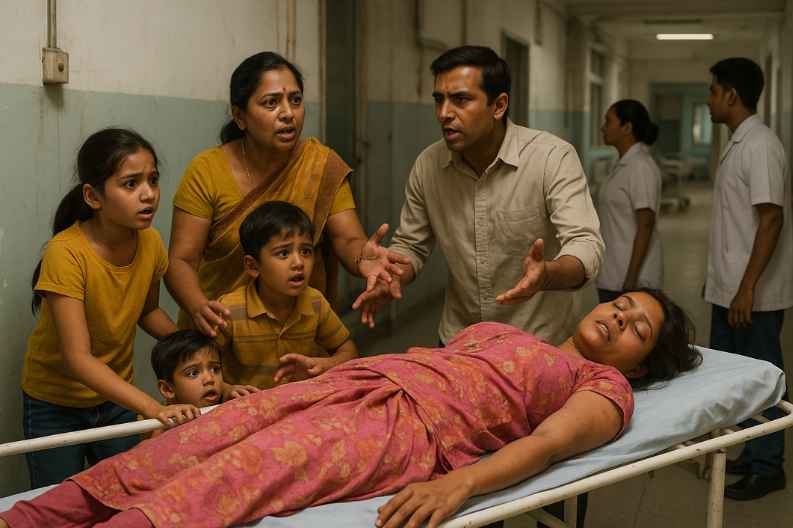
Udaipur: A serious incident where severe negligence alleged at Maharana Bhupal Hospital. A family alleges that hospital staff ignored their repeated calls for help while a mother in critical condition struggled without support. Her two young children and relatives searched desperately for anyone who could assist, but no staff member stepped forward.
Eyewitnesses say the family asked for immediate medical attention several times. Each request went unanswered. As minutes passed, panic grew. What began as a medical emergency soon turned into a moment of deep shock for everyone present.
The family’s account questions the hospital’s emergency response system and the responsibility of on-duty staff. They believe the delay could have changed the course of their lives. “One moment of negligence can change an entire family’s future,” a relative said. They argue that a life-saving institution cannot afford such lapses, especially during critical moments.
Hospital officials have not released a statement so far. The incident has sparked public concern, and many citizens are demanding a quick inquiry and stricter enforcement of patient-care standards.
At its core, the allegation is alarming. A hospital built to protect lives may have ignored a family’s desperate pleas. If the account proves accurate, the problem goes beyond poor care. It reflects a troubling system failure.
For the family, even a short delay carried heavy consequences. For the hospital, this moment calls for transparency and reform. In the days ahead, key questions will shape the investigation: Did staff truly fail to respond? Did they misjudge the urgency? And is this an isolated failure or part of a deeper pattern?
Uncategorized
PM Modi Meets the Victim of the Delhi Blast: A Detailed and Clear Report
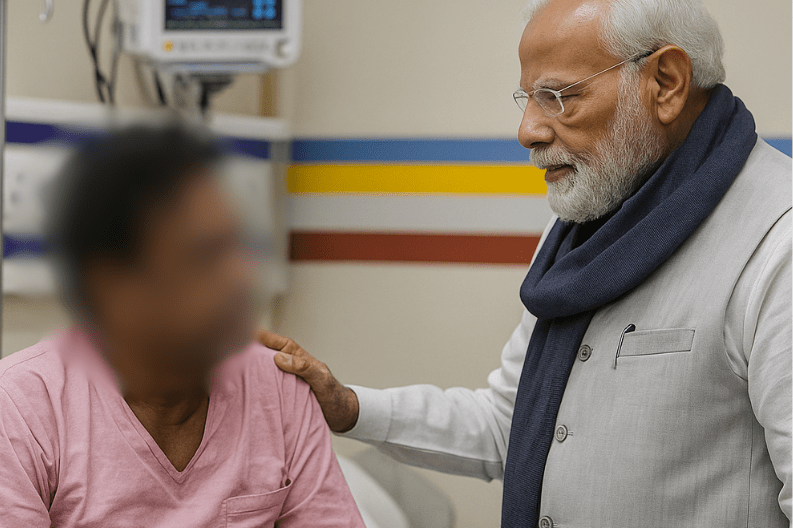
Prime Minister Narendra Modi returned from Bhutan, and PM Modi meets the victim of the Delhi blast, soon after he landed in Delhi. He went straight to Lok Nayak Jai Prakash (LNJP) Hospital on Wednesday. There, he met every injured person and asked about their health. He also spoke with doctors about the treatment. PM Modi told the hospital staff that the government would act fast to support the victims. Security outside the hospital remained very tight due to the serious situation. The blast near the Red Fort on Monday evening killed nine people and injured more than twenty. It happened during rush hour, and many people were scared.
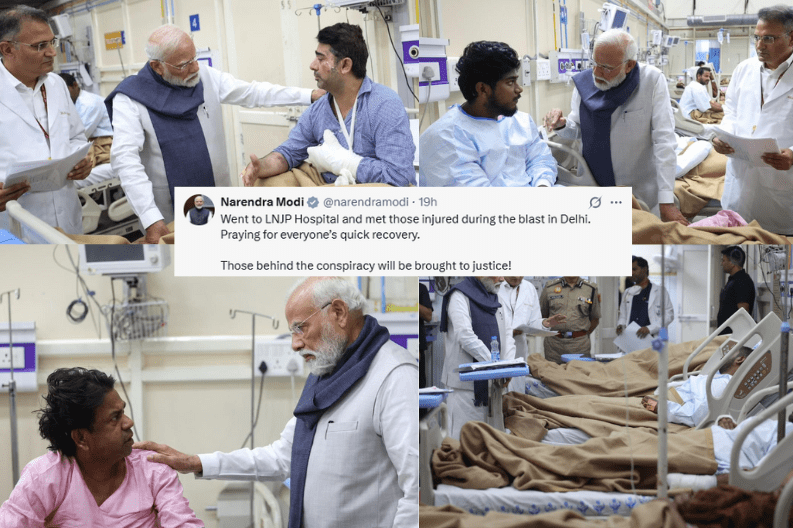
Investigators said the explosion came from a slow-moving Hyundai i20 filled with explosives. The blast damaged several vehicles nearby. Soon after the incident, security agencies arrested eight suspects. This group included three doctors. Police also found nearly 2,900 kg of explosive material linked to Jaish-e-Mohammed and Ansar Ghazwat-ul-Hind. Officers found more ammonium nitrate at a private university in Faridabad. Officials believe the suspects planned to attack during Diwali and later on Republic Day, but they failed to carry out their plans.
Home Minister Amit Shah held an urgent security meeting after the blast. He asked all security teams to work closely and check every detail. The National Investigation Agency (NIA) now leads the case. Security alerts have increased across Delhi, Uttar Pradesh, Bihar, and Mumbai. Police are checking more people at metro stations, markets, bus stops, and religious places. Investigators are also trying to confirm if the blast was a suicide attack because the driver, believed to be Dr. Umar Nabi, died at the scene.
During his Bhutan visit, PM Modi spoke about the tragedy. He said he felt deep sorrow for the victims. He promised that the people behind the blast would face the strictest punishment. After he returned, he posted on X and prayed for the fast recovery of all the injured. Experts are studying the explosive materials now. Early reports show that the bomb was extremely powerful, even stronger than ammonium nitrate bombs used before.
As the investigation continues, the government is trying to assure citizens that the city is safe. More police teams now guard crowded places to prevent further danger. PM Modi said such attacks will not break India’s unity. He ended the day by promising that everyone involved in the planning or execution of the blast will face justice. With his strong message and his hospital visit, PM Modi meets the victim of the Delhi blast, which stands as a clear sign that the government will support the victims and protect the country.
-

 City Guide3 years ago
City Guide3 years ago3B2 Mohali Market Shops: Discover 44 Hidden Gems
-

 Entertainment2 years ago
Entertainment2 years agoTop 15 Punjabi Models – Male and Female List
-

 Entertainment2 years ago
Entertainment2 years agoTop 11 Punjabi Comedians of All Time
-

 Jobs4 years ago
Jobs4 years agoTop 20 IT Companies in Mohali
-

 Food4 years ago
Food4 years ago11 Best Restaurants in Mohali You Must Visit
-

 Property2 years ago
Property2 years agoWho Lives In Homeland Mohali: Punjabi Celebrities, Business People…
-

 Food3 years ago
Food3 years agoTop 15 Cafes in Mohali you must visit
-

 Education2 years ago
Education2 years ago10 Famous Punjabi Writers With A Great Impact On The Literary World
